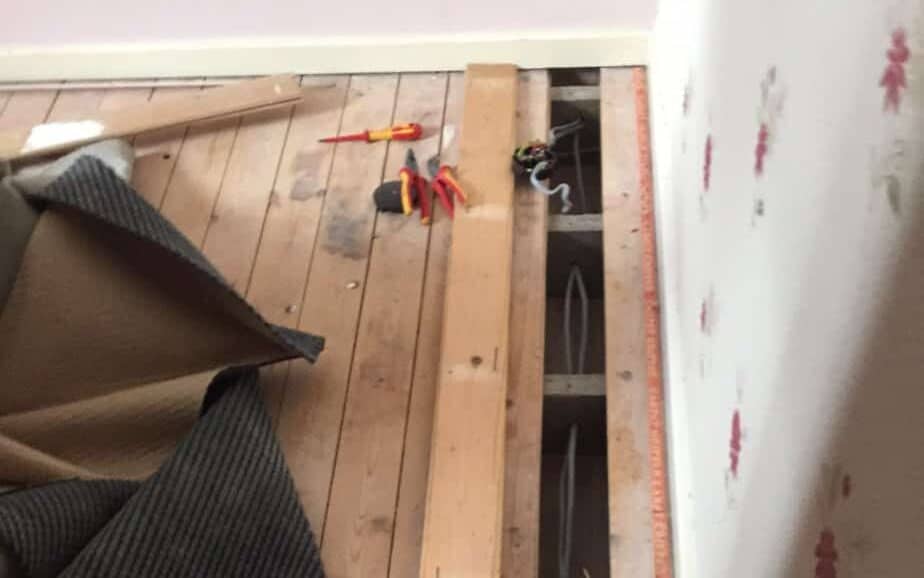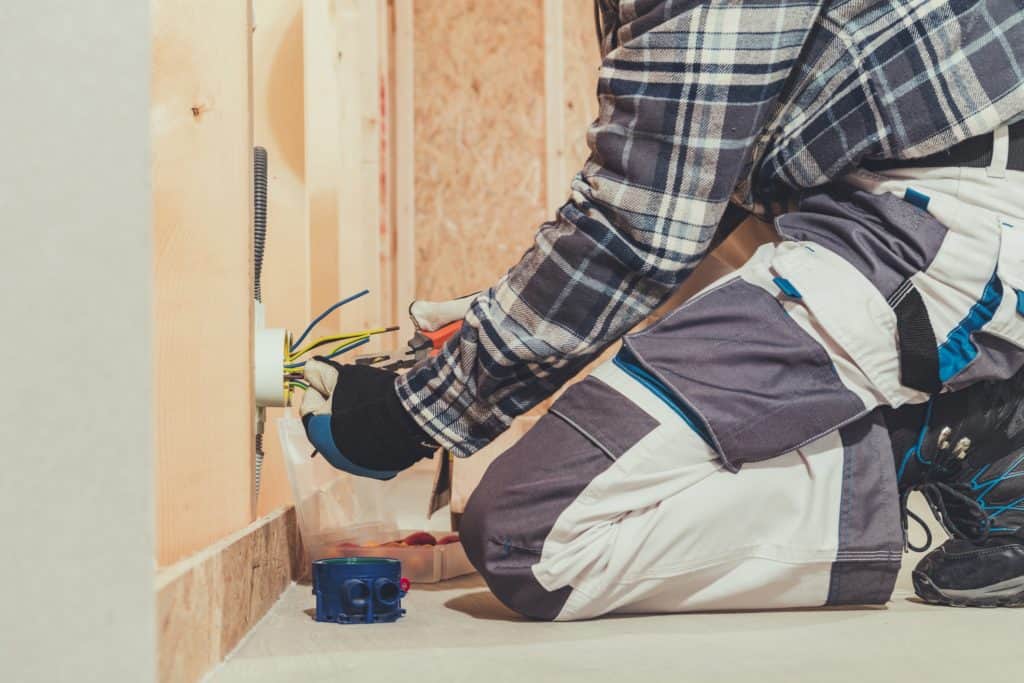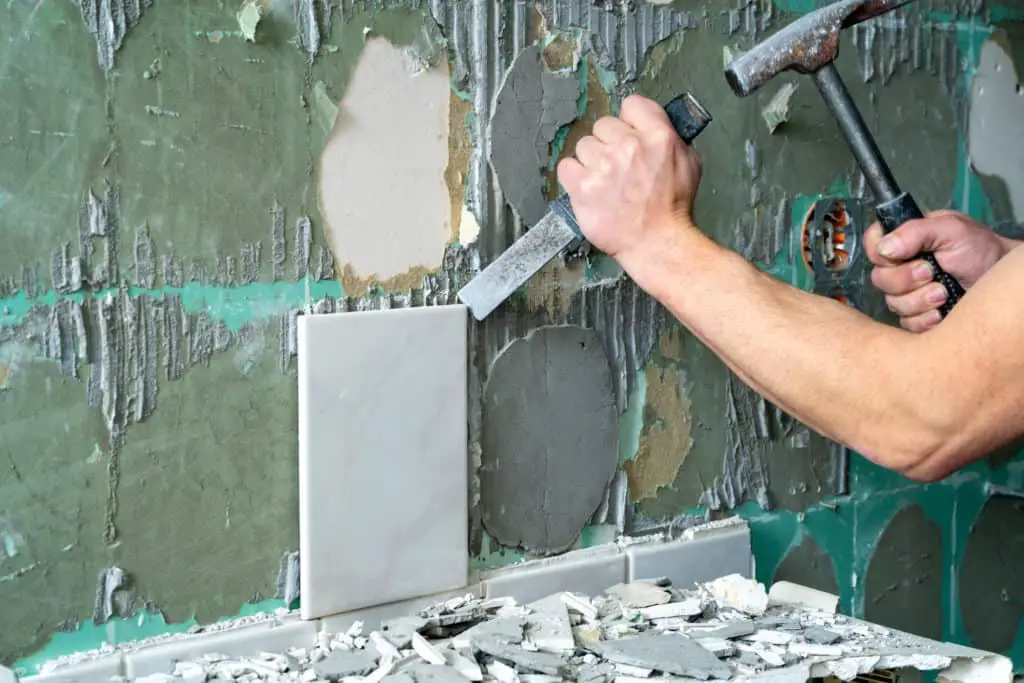When I knock on a homeowner’s door bright and breezy on a Monday morning to begin a rewire the door is often answered by an anxious-looking homeowner who’s not too sure what they are letting themselves in for.
The common anxious look is down to the fact that homeowners know a rewire is a major project to undertake but are unaware of exactly how disruptive rewiring a house is? By the time an electrician is knocking on the door to begin the work, it’s probably a good idea to have asked these questions in advance and have a clear idea that we are happy to proceed(!)
These are what I believe to be the 12 most disruptive things about getting a house rewired. My hope is to give homeowners a better idea of what to expect during a rewire and help alleviate that anxious feeling before the work begins.

If you’re about to embark on an epic construction project and want to know, how disruptive is rewiring a house? these are the 12 main factors to consider
- Loss of Power
- Dust (Lots of Dust)
- Noise
- Access All Areas
- Furniture Moving
- A Rather Full House
- Moving Out
- Hidden Asbestos
- Removing Wall Tiles
- Kitchen Cabinet Damage
- Replastering
- Redecorating
Loss of Power
The first one is perhaps the most obvious but power loss can cause the biggest amount of disruption during the rewire. Unlike with smaller jobs, ensuring all our devices are fully charged isn’t going to be enough to get us through the two weeks the rewire is likely to take.
If living in the home at the same time as the work takes place the electricians will be working to get parts of the power back on each night. Kitchen items like fridges and freezers are fine left for several hours with the doors closed but any longer and moving the contents to colder climates is likely to be needed.
We can recharge devices each night on the remaining live sockets after the electricians have left. However, I’ve often had to drop the bad news onto a customer, who’s feeling happy with their fully charged laptop ready to start work for the day, that without power the internet is also down.
Dust (Lots of Dust)
This is a big one and one we need to be honest about. Any good electrician will do their best to keep dust and mess to a minimum and we even have some handy gadgets that help catch dust when drilling and chasing walls.
Unfortunately, the reality is that dust is so fine some always manage to escape and land on the surfaces around the home. Cleaning fanatics may find mess the most disruptive part of a rewire but it’s worth remembering that it is only temporary and nothing a good clean at the end won’t fix.
Noise
In years past (before I became an electrician thank goodness) if a tradesman wanted to make a hole in a wall they would pull out their hand drill and furiously turn the handle until either their arm got too tired or the hole was complete.
Fortunately, for the sake of our arms and speed, electricians now have a multitude of gadgets that allow us to complete the rewire much quicker. The payback for all this extra speed is the noise these tools create. Wall chasers are loud, drills are loud, and lifting floorboards is loud. It’s usually a good idea to chat to the neighbours before the work begins to give them a friendly warning.
Access All Areas
A rewire is a complete overhaul of the electrical systems within the home. This is great as when the work is complete everything from the cables buried in the walls to the fuse box (consumer unit) is brand new. The downside is that these electrical systems run throughout the entire house which means that the electricians will need to get access and work throughout the entire house.
Having electricians working all-around your home, like an army of invading ants, can leave homeowners feeling like there is nowhere to go for some peace and quiet.
Furniture Moving
The areas beneath the floorboards are like motorways for electrical cables. We use these main routes to run the cables along, starting from the consumer unit and then taking exit ramps where the final destination is, be it a socket or a light switch.
Gaining access to these cable motorways and slip roads generally requires moving the furniture into the middle of the rooms. Taking belongings out of cupboards and wardrobes makes moving them a lot easier and be sure to safely protect any valuables from getting damaged in the moving around.
A Rather Full House

I’m not sure what the collective term is for a group of electricians (gaggle?) but many homeowners find their house gets a little cramped when two, three or even four electricians are also added into the mix. As well as the electricians themselves, there are at least one toolbox each, plus power tools, fixings trays, and the materials themselves such as cable drums and capping. Even the largest home becomes cramped
Moving Out
Although it is possible to live in a house whilst it is being rewired, many homeowners decide to save themselves the stress and move out while the rewire takes place.
In my opinion, this is the correct way to go but it is not without disruption. Staying with a friend or family member is a welcome break for some but can be a trying time for others. Moving out of our homes is one of the biggest disruptions when having a house rewired.
Hidden Asbestos
Asbestos was widely used before the 1990s when the government stepped in and started to ban it. The health implications are know known and exposure to asbestos is taken very seriously. Due to its fire-resistant properties asbestos was so widely used that it can crop up in surprising places such as Artex ceilings or within the cable itself (if its old enough)
The government HSE website has more info about asbestos but it’s worth bearing in mind that if the electricians discover unknown asbestos during the rewire this can have a serious delay on the timescale of the work (not to mention paying additional costs to have the asbestos professionally removed and disposed of)
Removing Wall Tiles

Cables are neatly hidden in the walls as its much more aesthetically pleasing than the surface-mounted containment options used in many commercial buildings. The downside is that getting access to the cables to replace them means we need to damage the nice walls.
Cutting chases into ordinary plastered walls is disruptive enough but when there are tiles on that wall, such as in bathrooms or kitchens, the disruption levels ramp up a notch. It may be that only sections of tiles need to be removed limiting the damage and need for new ones. However, homeowners may decide that now is a perfect time to get all the tiles off and have a completely new look once the work is over.
Kitchen Cabinet Damage
I felt that kitchen cabinets deserved a special mention as they are fixed objects which cost a reasonably large outlay to replace. Similar to the tile removal above, in order to get access to the cables hidden in the kitchen walls the cabinets often need to be removed.
Anyone who has taken IKEA furniture apart to move it knows that it never seems to quite go back together as strongly as when it was first constructed. Maybe a rewire is a great excuse for a new kitchen refit at the same time(?).
Replastering
Most electricians will not plaster after a rewire and instead will subcontract the work out to a plasterer friend or leave it to the homeowner to make good to the walls afterwards (depending on what was agreed before the work began)
Once the electricians have packed up and left there is the additional disruption of having the plasterers come in, again taking over most of the house with their tools and equipment. At least during this stage, the power remains on so that dehumidifiers can be used to help dry the new plaster out quicker and move the work along at a faster pace.
Redecorating
The final biggest disruption to having a rewire done on our homes is all the redecorating that needs to be completed afterwards. The walls around the home are going to bear the scars of rewire surgery and a quality painter and decorator will be needed for the final finish.
Although having the home decorated is disruptive it is the final leg of the difficult journey. Like the cyclists of the Tour de France, the final stage is a much more relaxed affair after the previous weeks’ trails and tribulations (possibly even a glass of champagne can be shared)
Final Thoughts
So, how disruptive is rewiring a house?
I’ve tried to set out the biggest disruptions when having a house rewire to give homeowners an idea of what to expect. It should be said though that while a rewire is disruptive it is a short time and any professional electrician will make the process as smooth as possible.
Working with the tradesmen is the best way to achieve the best results in the quickest time possible. If a homeowner chooses to stay in their home during the work but then asks the electricians to stop making noise every five minutes it is going to have a negative impact on how long the work takes.
The majority of rewires I have carried out have been completed whilst the homeowners are away. This allows them to return when the work is finished to a fresh-looking new home. In my opinion, this is the option I would most recommend for anyone having a rewire done to keep disruption to a minimum.

